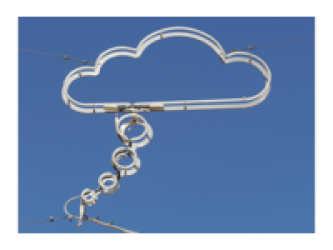meta data for this page
| up to GROT: A new rotation file format for GPlates | |
| ← Basic features of the *.grot syntax | → File body: The rotation sequences |
GROT File format: File header [mandatory]
New GPlates rotation files have a mandatory file header which must be present in all rotation files. The file header contains important information on how to processes different parts of the file and also carries important metadata, such as information on the Geological Time Scale used for rotations. The file header contains global metadata which are referenced in the file body. It adheres to specific format and contains mandatory attributes Apart from the mandatory metadata in the header, there are also optional blocks which allow the user to put revision information or any other data the user finds necessary. Future version of GPlates (> 1.3) will include the opportunity to edit this information through a GUI.
The file header follows the core elements of the Dublin Core metadata initiative which specifies 15 standard tags to identify electronic documents (see DublinCore terms).
Let’s start out with the mandatory information in the file header, here’s the overview:
Rotation file version
The first line uses the @GPLATESROTATIONFILE:version“xx” attribute to specify that this file adheres to the new rotation file standard and gives the current rotation file version number.
@GPLATESROTATIONFILE:version"1.0"
@GPLATESROTATIONFILE:version – File format versioning
Dublin Core document metadata
The subsequent attributes use the @DC parent attribute to denote a set of Dublin Core metadata describing the file content (see the Wikipedia article on Dublin Core. This also includes links to licenses, modification dates and proper citations for the file. See the GPlates GROT Format attribute list for a complete listing and explanation of the header attributes.
@DC — file metadata
@DC:namespace"http://purl.org/dc/elements/1.1/"
@DC:title"GPlates rotation file - NEW ROTATION FORMAT SAMPLE FILE"
@DC:creator:name"Foo Bar"
@DC:creator:email"mailto:some.name@example.com"
@DC:creator:url"http://www.gplates.org"
@DC:creator:affiliation"EarthByte Research Group, School of Geosciences"
@DC:creator:affiliation"The University of Sydney, NSW 2006, Australia"
@DC:rights:license"Attribution-NonCommercial-ShareAlike 3.0 Unported (CC BY-NC-SA 3.0)"
@DC:rights:url"http://creativecommons.org/licenses/by-nc-sa/3.0/"
@DC:date:created"2/06/11 4:08:05 PM"
@DC:date:modified"$Date: 2012-05-12 00:48:08 +1000 (Sat, 12 May 2012) $"
@DC:coverage:temporal"0-600 Ma"
@DC:bibliographicCitation"""Chin, Mueller, Cannon, Landgrebe, Heine,
Watson, Turner (2012) The GPGIM vol:pp-pp,
J. Digitial Earth. doi:xxxxxxxxx """
@DC:description"""
A sample rotation file in the new GPlates rotation file format v1.1
Based on moving Indian/Atlantic hotspots (O'Neill et. al. 2005)
to 100 Ma and true polar wander corrected palaeomagnetic
reference frame (derived from Steinberger and Torsvik 2008)
from 100 - 200 Ma. 250 Ma is the extent of this rotation model.
Pacific absolute reference frame based on Wessell and Kroenke 2008
with a switch to Wessel et. al. 2006 at 118.4 Ma
Reference for rotation model: Seton et. al. (submitted to ESR)"""
Contributing authors
The next mandatory block is the contributor information related to individuals who have worked on various parts of the rotation sequences. In order to correctly attribute contributions which have not made it into publications, this section lists authors with their contact details and full name. The lines use the @DC:contributor form of the Dublin Core specifications and the value field contains multiple values. In most cases, especially in intra-institutional use, not all rotations are published in the form of a citable reference, enlisting contributing authors still provides a reference to the creator.
@DC:contributor – Contributing authors
Template
@DC:contributor"id | Real Name | Email | URL | [Postal address, other contact details]
Example (single line)
@DC:contributor"""FOBA | Foo Bar | foo.bar@example.com | http://www.example.com | The FooBar Geodynamics Group, BarFoo University, Jupiter"""
Example (multi line)
@DC:contributor"""FILA |
Firstname Lastname |
first.last@example.com |
http://www.example.com |
FooBar Research Group, BarFoo University"""
Bibliographic and reference section
The next mandatory block encompasses the bibliographic or reference data valid for the file globally. The field contain a reference to a bibliographic data base in BibTeX format as well as to the GPlates Information Model (GPGIM) website and a base URL for the Digital Object Identifier (DOI). All these attribute will be referenced from the individual MPRS or rotations.
@BIBINFO — Optional inclusion of bibliographic databases
The inclusion of mandatory bibliographic reference data allows a future use of GPlates in conjunction with hyperlinks (through the DOI) to a PICT PICT publication as well as direct links to a bibliographic companion database file:
@BIBINFO:bibfile"file://rotationfile.bib" @BIBINFO:doibase"https://doi.org/" @GPML:namespace"http://www.earthbyte.org/Resources/GPGIM/public/"
Geological time scales
One of the most important piece of metadata is information about the geological time scales (GTS) used to convert relative geological ages to absolute times.
@GEOTIMESCALE – Mandatory inclusion of Geological Time Scales
These GTS constantly evolve and a Base Aptian on some timescale from the 1990’s has a few Million Years difference to a Base Aptian from the 2010’s. The GTS are listed in the header section and are referenced through a tag at individual rotation level.
Template
@GEOTIMESCALE" ID | DOI/URL/ISSN (specify) | CiteKey | Bibliographic record/Comment"
Multiline specification of GTS
@GEOTIMESCALE""" GEEK07 |
doi:10.1016/B978-044452748-6.00097-3 |
Gee.ToC.07 |
Gee, J.S. and Kent, D.V. (2012) 5.12 - Source of Oceanic \
Magnetic Anomalies and the Geomagnetic Polarity Timescale, in: Treatise on\
Geophysics, Volume 5, Pages 455--507, Elsevier, Amsterdam"""
#
@GEOTIMESCALE""" CK95G94 |
doi:10.1029/94JB03098; doi:10.1029/94JB01889|
Cande.JGR.95; Gradstein.JGR.94 |
S. C. Cande and D. V. Kent. Revised Calbration of the\
geomagnetic polarity timescale for the Late Cretaceous and Cenozoic. \
J. Geophys. Res., 100(B4):6093--6095, 1995.;
F. M. Gradstein, F. P. Agterberg, J. G. Ogg, J. Hardenbol, P. van Veen,\
J. Thierry, and Z. Huang. A Mesozoic time scale. J. Geophys. Res.,\
99:24051--24074, 1994. doi:10.1029/94JB01889."""
#
@GEOTIMESCALE""" Absolute
|
|
Absolute numerical time in Ma"""
OPTIONAL: Revision history
The optional revision history block is used for versioning. The actual list of applicable subattributes depends on the versioning system used.
@REVISIONHIST – Optional inclusion of versioning information
Each Keyword shouldbe shortened and prefixed by @REVISIONHIST[keyword]“value”. Example for a Subversion repository setup:
@REVISIONHIST"$Id: CHHEI_RotFileStd.tex 1793 2012-05-11 14:48:08Z christian $"
 This needs to be adopted to GIT and other systems taking over from SVN.
This needs to be adopted to GIT and other systems taking over from SVN.

